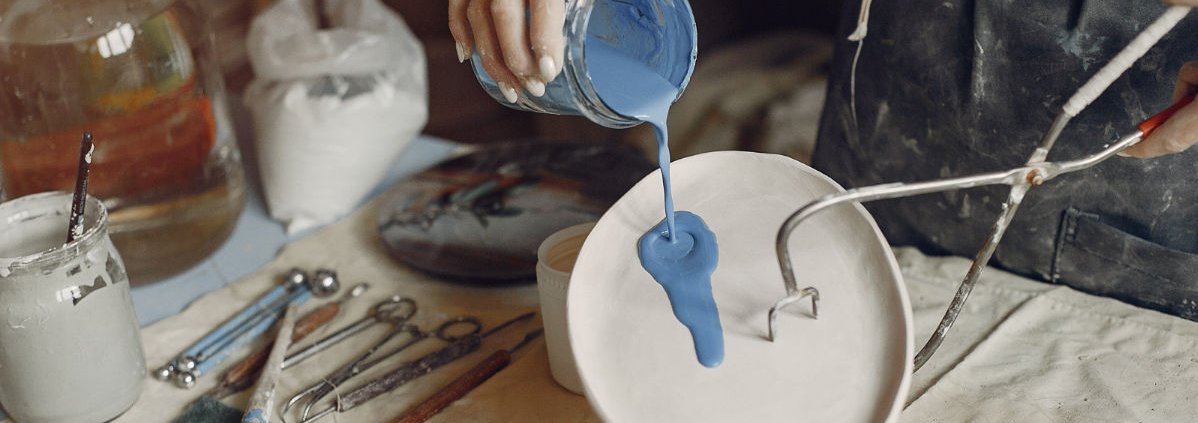To Paint and Decorate Before or After Bisque Firing? A Guide to Choosing the Right Timing for Adding Surface Decoration to Pottery
Summary
Adding surface decoration to pottery is an exciting and creative part of the ceramic process that allows artists to personalize their pieces and add unique visual interest. One common question that arises is whether to paint and decorate before or after bisque firing. In this blog post, we’ll explore the advantages and disadvantages of both approaches to help you make an informed decision on the best timing for adding surface decoration to your pottery projects.
Ideas
Painting and Decorating Before Bisque Firing
Painting and decorating before bisque firing involves applying glazes, underglazes, or other surface decorations to raw, unfired clay, and then firing the piece in a kiln for the first time. The firing process, known as bisque firing, typically takes place at a lower temperature (cone 06 to cone 04) and hardens the clay while setting the surface decorations in place. Once the bisque firing is complete, the piece is then ready for the final glaze firing at a higher temperature (cone 5 to cone 10), which fully matures the glaze and brings out the colors and effects of the surface decoration.
Advantages of painting and decorating before bisque firing:
Better adhesion: Painting and decorating before bisque firing allows the glazes or underglazes to bond with the clay surface more effectively, as they have a better chance to adhere to the clay while it is still soft and porous. This can result in a more durable and long-lasting surface decoration.
More control over colors and effects: Painting and decorating before bisque firing allows artists to have more control over the colors and effects of their surface decoration. The colors of glazes and underglazes can be more vibrant and intense when applied to raw clay, and the effects, such as sgraffito, mishima, or carving, can be more pronounced.
Easier cleanup: Painting and decorating before bisque firing can make cleanup easier, as any mistakes or unwanted marks can be wiped off or smoothed out more easily on raw clay compared to bisque-fired clay, which is harder and less forgiving.
Painting and Decorating After Bisque Firing
Painting and decorating after bisque firing involves applying glazes, underglazes, or other surface decorations to already bisque-fired clay, and then firing the piece in a kiln for the final glaze firing at a higher temperature (cone 5 to cone 10). This approach allows the artist to see the bisque-fired surface and make intentional design choices based on the texture and color of the clay.
Advantages of painting and decorating after bisque firing:
Better visibility of bisque-fired surface: Painting and decorating after bisque firing allows artists to see the actual texture and color of the bisque-fired clay, which can inspire new design ideas and result in unique and unexpected surface decorations that complement the clay body.
More forgiving for mistakes: Painting and decorating after bisque firing can be more forgiving for mistakes, as glazes and underglazes can be wiped off or corrected more easily on bisque-fired clay compared to raw clay.
Lower risk of damage during handling: Painting and decorating after bisque firing reduces the risk of damaging the surface decoration during the handling and firing process, as the bisque-fired clay is harder and less fragile compared to raw clay.
Conclusion
The decision on whether to paint and decorate before or after bisque firing depends on your personal preferences, the specific effect you want to achieve, and your level of comfort and experience with the ceramic process. Painting and decorating after bisque firing may offer better visibility of the bisque-fired surface, more forgiveness for mistakes, and a lower risk of damage during handling. Both approaches have their advantages and disadvantages, and it’s important to consider your specific project and artistic goals when making a decision.
Ultimately, the best timing for adding surface decoration to your pottery depends on your artistic vision, comfort level with the ceramic process, and the effects you want to achieve. Some artists prefer to paint and decorate before bisque firing for better adhesion and more control over colors, while others prefer to paint and decorate after bisque firing for better visibility of the bisque-fired surface and more forgiveness for mistakes. It’s essential to experiment and find the approach that works best for you and your pottery style.
Remember to always follow proper glazing and firing techniques, and consider consulting with experienced potters or ceramic artists for guidance and advice. With practice and experimentation, you can create stunning and unique surface decorations on your pottery that will enhance your artistic expression and delight your audience. Happy decorating!



